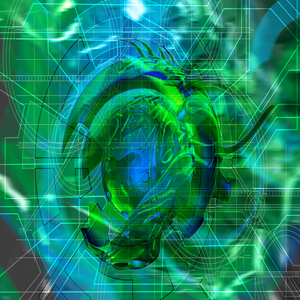The Ancient Core of the Modern Brain

Here is a question for biology students everywhere: “Which part of the brain is closest to the surface of the body?”
The answer is the retina of the eye.
We have known for two centuries that some parts of the brain are involved in primary perception.
But some extraordinarily interesting new research suggests that the brain may have started out as a sensory organ.
Hormones are usually divided into three major groups:
Endocrine
Paracrine
Autocrine
They are important in the control of growth, metabolism, reproduction and many other important biological processes.
In human beings, as in all other known vertebrates, the hormonal control signals are generated by specialized centers in the brain such as the hypothalamus. The signals generate a cascade of effects in different endocrine organs throughout the body. Over the years the list of endocrine organs has been growing, now including the heart and intestines. There is a long list of illnesses that can occur if organs escape from these control signals, or do the adolescent trick of ignoring what they are told.
Over the last decade we have been learning that many of our hormones have been around with little structural change for hundreds of millions of years, though they may have different roles in mammals, fish and birds.
It was interesting to learn that researchers from the European Molecular Biology Laboratory (EMBL) have shown that the hypothalamus and its hormones are not purely vertebrate inventions, but have their evolutionary roots in marine, worm-like ancestors.
Writing in the journal Cell they report that hormone-secreting brain centers are much older than expected and likely evolved from multifunctional cells of the last common ancestor of vertebrates, flies and worms.
For the most part hormones mostly have slow, long-lasting effects that complement the faster activity of the nervous system. Insects and nematode worms have simple but effective nervous system and rely more on the secretion of hormones to transmit information, within and between individuals.
Kristin Tessmar-Raible from Detlev Arendt’s laboratory at EMBL compared two types of hormone-secreting nerve cells in zebra fish, a vertebrate, and the annelid worm Platynereis dumerilii. The researchers found some astonishing similarities. Not only were both cell types located at the same positions in the developing brains of the two species, but they also looked similar and shared the same molecular composition.
One of the cell types secretes vasotocin, a hormone controlling reproduction and water balance, while the other secretes a hormone called RF-amide.
Each cell type has a unique combination of regulatory genes that are active in a cell and give it its identity. The similarities between the fingerprints of vasotocin and RF-amide-secreting cells in zebra fish and Platynereis indicate a common evolutionary origin of the cells.
Another point in common is that in both species the cells are multifunctional: they secrete hormones and at the same time have sensory properties. The vasotocin-secreting cells contain a light-sensitive pigment, while RF-amide appears to be secreted in response to certain chemicals.
What this tells us is that we are probably looking at the most ancient types of neuron. Most likely their role was to link sensory cues from the marine environment to changes in the animal’s body. Over time these autonomous cells might have clustered together and become more specialized, eventually forming complex brain centers like the vertebrate hypothalamus.
If this were just a clever bit of molecular biology and a trip down the memory lane of evolution it would be interesting but nothing more.
Instead these findings force us to think about the development of the brain in a totally new way.
It looks as if the brain did not start out like a little computer for integrating and interpreting incoming sensory information. It began life as a sensory organ and we will likely find that it is not just the retina that has a sensory function.
Rethinking the brain as an organ for sensation and association instead of a computer for analyzing and processing may help explain a number of puzzles about the brain and how we use it.






